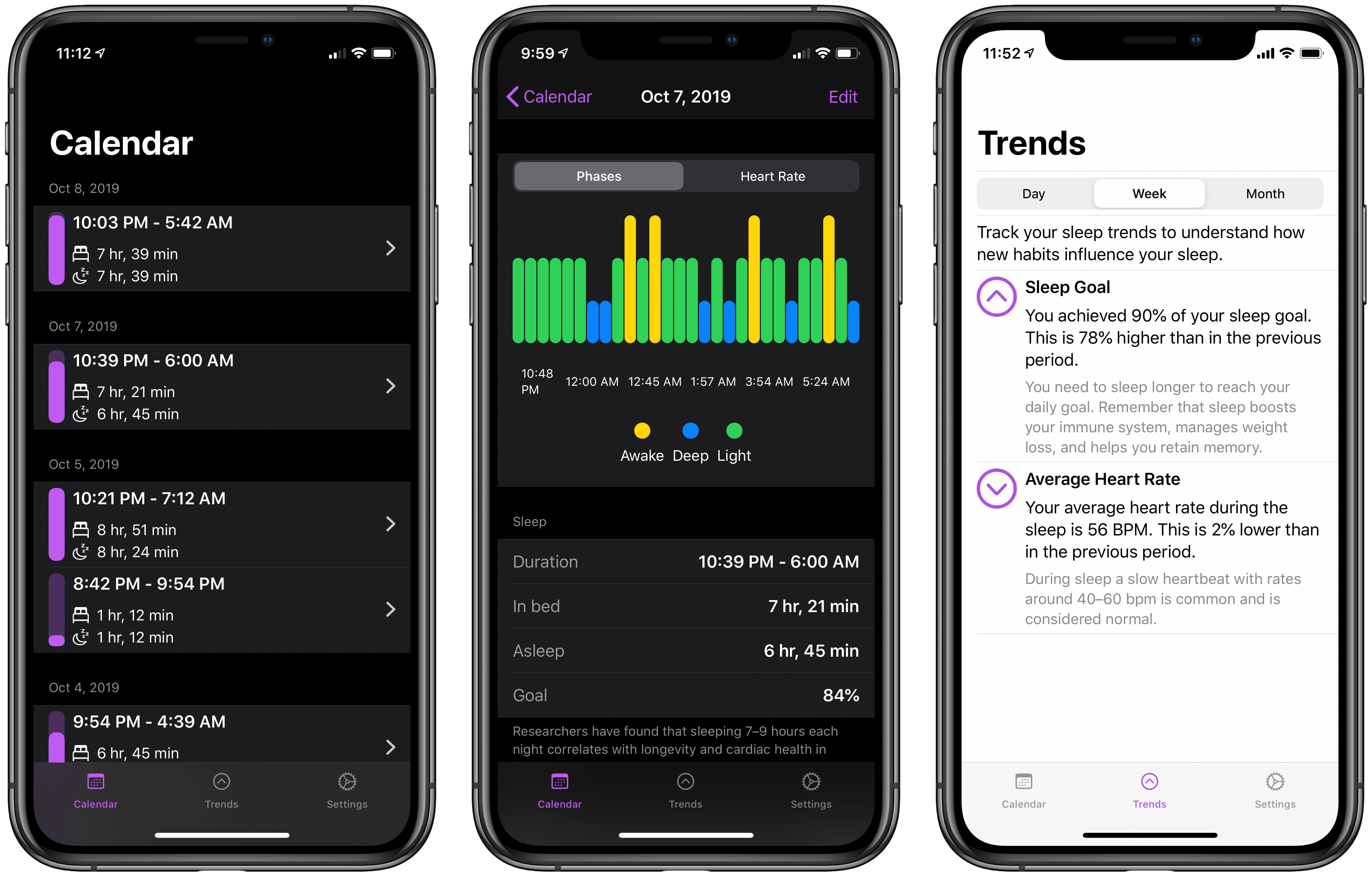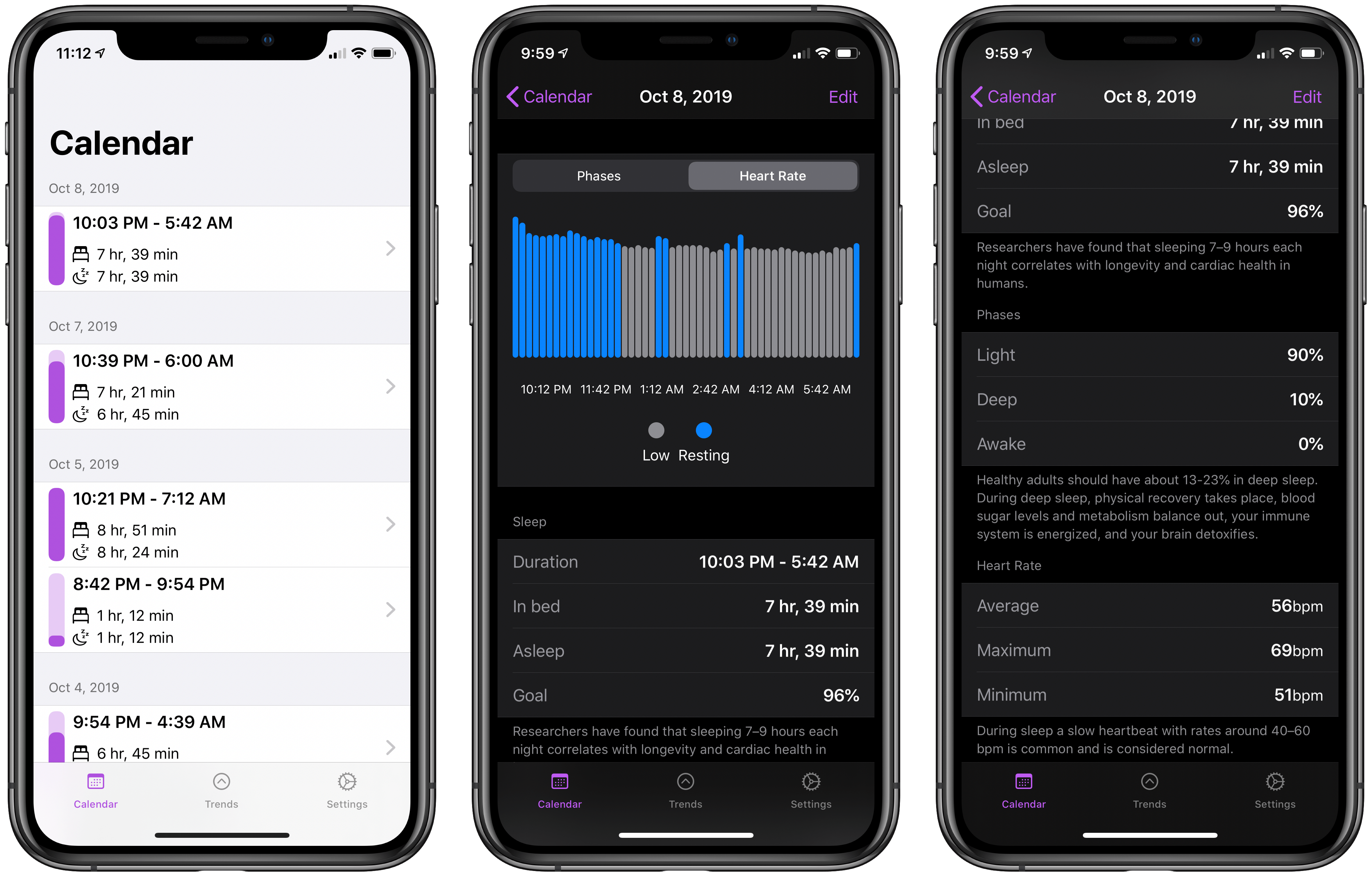Sleep tracking is an area of health that Apple hasn’t yet formally moved into, but all signs point to that changing soon. iOS 13 saw the company build more advanced wellness tracking features into the Health app, Beddit was acquired by Apple a couple years ago, and very recently the App Store leaked evidence of a Sleep app that is (or was) in development for Apple Watch. But for the time being, anyone interested in sleep tracking with a Watch or iPhone needs a third-party app.
NapBot is one such app, a new debut from the maker of CardioBot that launched in recent weeks. NapBot applies CoreML to perform automatic sleep tracking when you’re wearing an Apple Watch to bed, the results of which you can then view in either the iPhone or Watch apps.
To get started with NapBot, you’ll be asked to grant the app access to your sleep data and other relevant data types stored in the Health app. Once that’s done, all you have to do is wear your Apple Watch to bed to have NapBot automatically track your sleep in the background. With no effort taken on your part to ever manually “start” or “stop” your sleep cycle, you gain new sleep data that’s stored inside NapBot and also the Health app. You don’t even need to have NapBot installed on your Watch if you don’t want to; the app does, however, require that you own a Watch, as it offers no functionality without one.
When viewing your sleep data inside NapBot, you’ll see three main tabs in the iOS app: Calendar, Trends, and Settings. Calendar shows a descending list of your most recent sleep entries, which can be tapped to see more details. NapBot’s use of on-device machine learning via CoreML enables you to gain special insights into the quality and duration of your sleep. NapBot presents a visual graph of your night’s rest, with different colored bars showing times you were awake or in light or deep sleep. There are also percentages given to these different states, including my favorite touch: guidance regarding what amount of deep sleep a healthy adult should get. The same applies for heart rate measurements: there’s a sentence of explanatory text mentioning what common heart rates are during sleep. Data on its own isn’t of much use unless you know how to interpret it, so I appreciate NapBot’s help in this area.
The Trends tab divides your sleep trends into Day, Week, and Month screens, and simply highlights how you’re doing in meeting your sleep goal, what your average heart rate has been, and what level of noise your sleeping environment has contained. The Settings tab is extremely simple, providing options to adjust your sleep goal and toggle notifications on or off.
NapBot is far from the first app to offer sleep tracking capabilities, nor is it the first to enable effort-free tracking; AutoSleep and Sleep++ have done a great job at these things for a while now. However, where NapBot stands apart is in offering a unique level of simplicity. Its competitors aren’t overly complicated per se, but NapBot is the first sleep tracking app I’ve used that contained no learning curve whatsoever. Both the way the app logs sleep data and how it displays that data is extremely user friendly, reflecting the type of elegance I expect we’ll see from Apple’s own sleep tracking feature if it ever ships.
NapBot is a free download on the App Store, with a pro subscription required to unlock full functionality.



